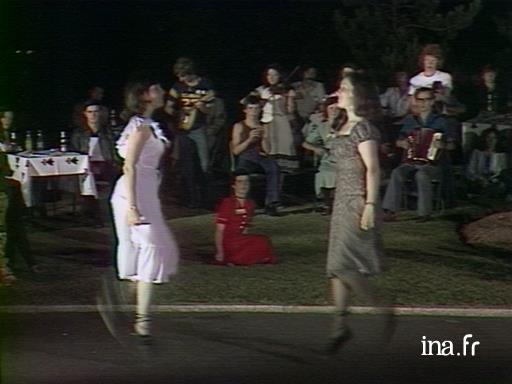The Festival Interceltique de Lorient, - Irish traditional dance

Information
Presentation of traditional Irish dancing performed in pairs at the Festival Interceltique de Lorient. The dances are performed wearing half-high heels with the legs extended outwards, to the sound of "Celtic" music, which is somewhat difficult to describe precisely.
Context
Thanks to festivals like Lorient, the French public was already able to enjoy performances of Irish dance as far back as 1977, although at the time it did not receive anything like the media coverage it is given today.
The concept of inter-Celtic culture has however existed since well before the 1970s: originating in central Europe, the Celts then spread throughout Europe and came to Ireland around 1000 BC. We know almost nothing about them, mainly because the act of writing was considered sacred and reserved for an elite. However, it is known that a common Celtic language gave rise to at least two different branches: a British one (Wales and Armorican Brittany) and Gaelic (chiefly Ireland and Scotland). Despite intense cultural and economic exchanges during the middle ages, it can be said that the musical ties between these nations are relativity subtle, except between Ireland and Scotland, which shared a common culture between the 5th and 16th century...
These relatively remote ties did however not prevent major inter-Celtic events from being held as early as 1838, and throughout the 19th and 20th century, including the festival of Lorient, which is only one of them, and certainly the most visible today. Of course, today, such international events are essentially designed to combine culture and economy, with a view to presenting the heritage of authentic cultures. Moreover, it would be impossible to give an exact and fair definition of Celtic music, as it possesses so many facets. The Celtic world is now seeing a creative effervescence, making the Festival de Lorient one of the largest in Europe. This effervescence is no doubt one of the reasons why Irish music, the most well-known of these music types, has now invaded scenes around the world, seducing audiences everywhere, be they in Warsaw, Caracas, Tokyo or Houston.
This video clip shows us another two-hand reel in an almost intimate atmosphere, which is perhaps less spectacular than modern editions of the festival of Lorient. This part of the dance is impressive, and the choreography itself is rather complex. It respects all the current competition standards, with the dancers' feet placed far forward; the dance is performed on half-high heels and with the legs extended outwards. Even the famous slippers (ghillies), with their laces that seem to inter-cross endlessly, are worn with pride. This lovely dance with its traditional aspects is performed in a simple yet attractive manner, without all the adornments used for competitions: wigs, bulky costumes overloaded with embroidery and rhinestones, and without "poodle socks", the famous Irish dance socks...










